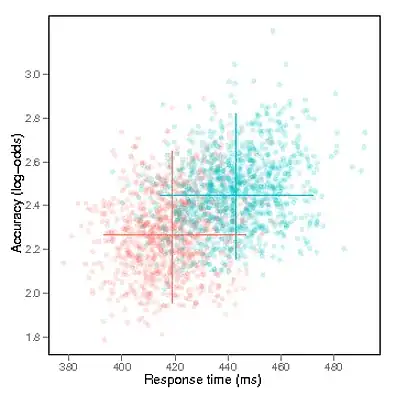I have been hunting around on the internet for days to find an example I can easily relate to but without successes. It would really appreciate some help with the following;
Joint pdf;
$f(x,y)=2(x+y)$ for $0<x<1$ and $0<y<x$, $0$ otherwise.
I found the conditional pdf to be;
$f(y|x)=2(x+y)/3x^2$ for $0<x<1$ and $0<y<x$, $0$ otherwise.
- Question;
I now need to find;
$Pr( X + Y >= 1)$
I believe I need to sub;
$f(y|x)=2(x+y)/3x^2$, into;
$f_Z(z) =\int_{0}^z f_{Y|X}(z-x|x)f_{X}(x)\,\mathrm dx$
Which I get $f_Z(z) = 2z^2$
However I am not sure what the support for $f_Z(z)$ should be? What is the general procedure to figure the support range out for transformations?
In a previous post it was suggested to think of the support range as $0<y<x<1$ but I haven't been able to see past this.
Note this is just a practice exam question.
